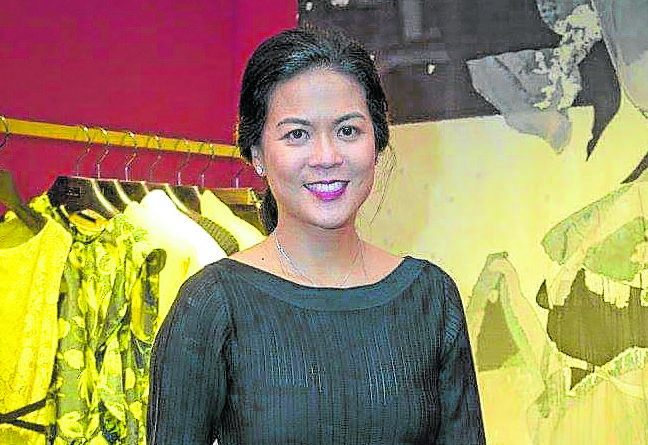
(First in a series)
With fashion categorized as nonessential industry during the pandemic, fashion retailers are faced with a Sisyphean task to weather the aftermath of the store closures of past three months.Even with ongoing store-wide sales to move inventory, shops have yet to see the prepandemic crowds.
But the same business owners are also banking on the Filipinos’ sociable nature and basic need for self-gratification to eventually pull stores out of this difficult period. Retailers are buckling up and fashioning new, creative ways to reach out to consumers.
Many brands have set up either e-stores, curbside pickups and even personal shopper and concierge services for a public that’s still largely wary to go out.
For Trimark Group (Mango, CH Carolina Herrera, Guess, Aeropostale, Rosa Clara, Vera Wang, among others), most of their stores have reopened, save for branches where “we couldn’t get enough staff to come to work because of public transportation,” according to Obee Ham, business development head.

Homegrown brand UnaRosa has also reopened 11 of its 12 boutiques, with stringent health protocols to ensure safety of both their customers and employees.
Luxury department store Rustan’s has reopened all its five stores, save for Cebu, which had to close again after the Inter-Agency Task Force for the Management of Emerging Infectious Diseases placed the city back under enhanced community quarantine. “We continue to be of service in Cebu through our Personal Shopper on Call program,” says Rustan’s president Donnie Tantoco.

Recalibrate
Brands have used the lockdown period to adjust how they do business amid the restrictions. “It forced us to think out of the box, and what normally took us longer to implement, we were able to do it in months and some even weeks,” said Ham, adding they launched the e-stores for Mango (https://shop.mango.com/ph) and Terranova (terranova.ph), as well as a multibrand e-store therail.com.ph (Vans, Toms, K-Swiss, Team Manila, etc.) during the quarantine.
“It allowed our team to take a step back, look at our strategies, recalibrate and pivot toward the new market and business dynamics,” says Tantoco.
“For one,” he adds, “it accelerated many of our plans to automate, digitize and grow our e-commerce. It gave us an opportunity to learn how we can achieve leaner, more efficient operations. And more importantly, it gave us the much-needed impetus to innovate at a faster and broader scale. These are things that would have taken a backseat or would have taken years before they can be implemented.“I think the store closure period was an opportune time to reinvent ourselves, and hopefully we did not let the crisis go to waste.”

UnaRosa turned to social media to reach out to customers, according to CEO and design head Monette Bata Garcia, since they’re still in the process of setting up their website. Customers reached them via Facebook (@unarosafashion) and Instagram (@shopunarosa), and made deliveries via bike riders.
Dampened consumer spending
“I think the recovery of fashion depends largely on consumer sentiment,” says Tantoco. “The fashion sector will remain challenged because of dampened consumer spending. It will be very difficult to predict when exactly fashion will recover, but when it does, it be will be a changed sector.
“For one, I think the move toward ‘slow fashion’ will accelerate. As consumers become more thoughtful about their spending, there will be less pressure for trends and more focus on classic, timeless pieces that cannot just be worn for years, but also stay on display in store shelves longer.”
Filipino women, however, will continue to want to feel good and reward themselves, Garcia says. “Our psyche will always long for something beautiful, and fashion will gratify that need instantly,” she adds.
Ham also believes bridal fashion will thrive, even as big gatherings are restricted. “Weddings are essential milestones that will proceed whether you have 10 or 100 guests, and brides know that the photos will last forever, so they would still want to wear the gown of their dreams.”
Tantoco thinks the athleisure category will be most resilient as consumers strive to be more active. “Health is no longer just wealth; health is survival during this period,” he says. ”As consumers spend more time at home, cozy and comfortable fashion pieces will be the style du jour. But homey should not always mean frumpy. Fashion pieces that consumers will not be afraid to be seen in while on video calls or on short errands outside will be in higher demand.”Brands who deal with imports also face additional challenges, with delivery delays and higher freight costs, says Ham.
Strict safety measures
All these stores now practise strict healthy measures. Rustan’s tests all employees for new coronavirus disease (COVID-19) before they report for work. Trimark will test its employees every two weeks in the next two months.
Clothes that are fitted are sanitized via steaming or UV light, depending on each store’s protocols.
“We are allowing the fitting of clothes, except at Rustan’s Gateway, as it is discouraged to do so in Quezon City as listed in their GCQ (general community quarantine) guidelines,” says Tantoco. “For the rest of our locations, all clothes that are fitted will be placed in a ‘For Sanitation’ bin.
These items will be kept for 24 hours, before being steamed and sanitized, and returned to the display.”
For bridal clients, Rosa Clara and Vera Wang are allowing only one companion, and only their bridal consultants are allowed to touch the bridal e-books and gowns.
“We also have to limit the number of appointments per day to observe social distancing and to make sure we disinfect the fitting rooms before the next bride comes,” Ham adds.
Discounting, sales
While most brands are holding sales to move inventory, Ham says, anyway, these are scheduled end-of-season sales and promotions. Its bridal sample sales are an annual event.
“We are doing a careful balancing act when it comes to discounting,” says Tantoco. “Especially for designer and luxury brands, the use of discounting must be carefully thought out so that it does not erode the equity of the brand. For example, designers like Giorgio Armani are calling for all fashion houses to produce less and less often to sell more items at full retail price.
“With supply chains being disrupted, it may take a longer time to replenish items, so discounting may not be ideal. Some brands have been known to destroy their excess inventory rather than sell them at a discount (e.g. Burberry). While I believe that such practice is inappropriate especially now amid a crisis, it is a study on what a luxury brand can and cannot do in order to preserve the value of its brand.
“Having said that, with our stores being closed for three months, we do find ourselves with some level of inventory that we would like to convert to cash. We observe a markdown policy that is within approved parameters by principals of the main brands we carry. It is also part of a bigger marketing or merchandising strategy that is aligned to our customers. Finally, we also operate an off-price format (red tag) that allows us to clear old inventory at Rustan’s and create room for fresh merchandise. That way, when our customers browse our stores and our website, it will be an inspiring experience where they see the latest and greatest in style and fashion.”
UnaRosa has shifted some of its production from dressy evening wear to casual wear. “Our designers quickly adapted by designing more lounge attire, PPE-inspired (personal protective equipment) clothing and Zoom meeting blazers,” Garcia says.
“For fashion retailers in the luxury sector like Rustan’s, we can still be resilient as long as we align to the shift in how consumers perceive value in things they buy,” says Tantoco. “Many consumers have reexamined their values and are much more conscious socially, spiritually and emotionally. These changes will reflect in how they spend their discretionary money and also their discretionary time.
“Consumers will have a different view of self-care, internal beauty and style now. So that may mean more focus on, among others, brands that are sustainable, brands that are authentic and true to a higher purpose, brands that promote positivity, self-love and community, and brands that allow them to pursue their new or rekindled sources of passion, like cooking, working out, gardening, etc.”












































